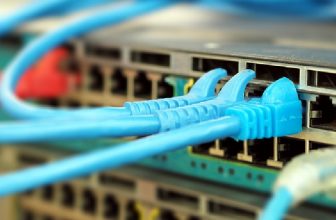How to Run Ethernet Cable Along Wall
Running ethernet cable along your walls is one of the most efficient ways to wire a home or business network. It eliminates the need for drilling holes into walls and ceilings, which can be time-consuming and require specialized tools. Additionally, it can help provide an aesthetically pleasing appearance when done correctly. You can save time and money by running an ethernet cable along a wall while still doing the job correctly.
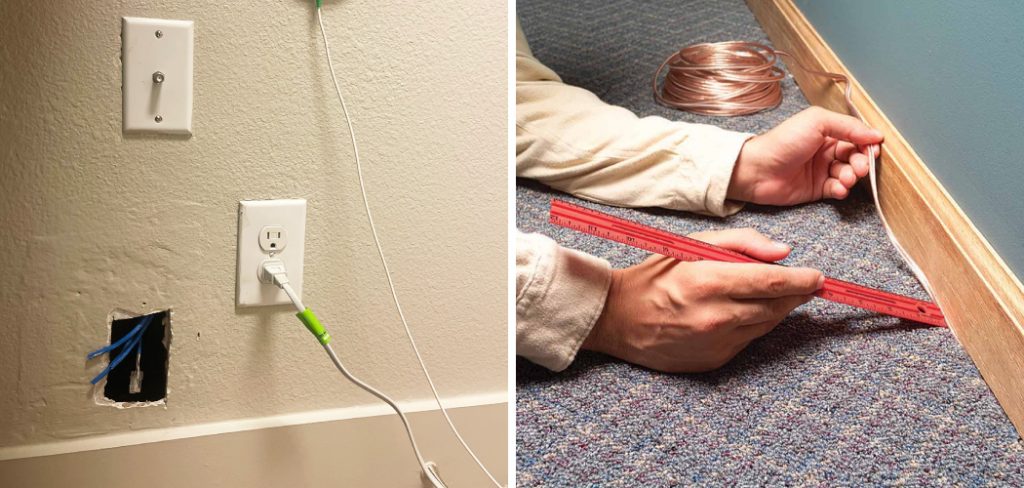
Running an Ethernet cable along a wall has several advantages. Firstly, it allows you to route the cabling in an organized manner that is aesthetically pleasing and easy to manage. Secondly, laying the Ethernet cable along the wall prevents damage from running cables through floors or ceilings, as there are no physical obstructions.
Furthermore, having your cables running along walls reduces the risk of accidental damage or interference from other objects. In this blog post, You will learn in detail how to run ethernet cable along wall.
Tools You Will Need
- Drill
- Extension Cord
- Fish Tape
- Hammer
- Level
- Marker
- Power Strip
- Pliers
- Screwdriver
- Wire Staples
Step by Step Processes for How to Run Ethernet Cable Along Wall
Step 1: Inspect the Wall
Before running any cables, inspecting the wall to determine where best to run your cable is important. Look for areas where there are no obstructions such as pipes, vents, or other wiring that could complicate the installation.
Step 2: Check Permits
It is important to check with the local building codes and permits to make sure that it is okay to run the Ethernet cable along the wall. Run a fish tape along the wall to determine how long your cable will need to be. Mark where each side of the cable needs to terminate and measure this distance so you know what length of cable you should purchase.
Step 3: Running the Cable
Start at one end of the wall and use a 3/4″ diamond drill bit to make holes for the cable. Connect each hole with an appropriate length of Ethernet cable. Install wall plates on both sides of the wall where your Ethernet cable will terminate. This will help to protect the cables and make them easier to access.
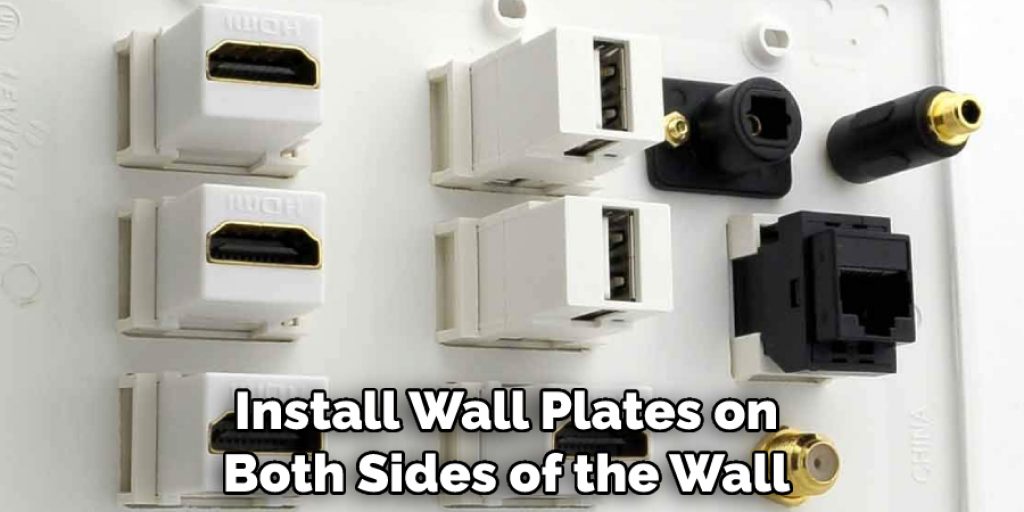
Step 4: Securing the Cable
Secure the Ethernet cable along the wall using zip ties or wire hangers for a neat, organized look. Connect both ends of the Ethernet cable using RJ45 connectors. Ensure that the connections are secure and tight. To make sure that your installation is successful, test the connection before concealing any wiring.
Step 5: Conceal Wiring with Wall Coverings
Once you have tested the connection, cover up any exposed cable using wall plates or other materials. This will help to protect the wiring and keep it secure. Finally, double-check your installation for any loose connections or missed wires. Make sure that all wires are safely tucked away and secured so they don’t pose a hazard.
Once you have completed these steps, you should have successfully installed an Ethernet cable along your wall.
Safety Tips for How to Run Ethernet Cable Along Wall
- Use the appropriate tools, such as a screwdriver, drill bit, and wire strippers. If you don’t have these tools, renting or borrowing them for your project is best.
- Make sure the wall is debris-free before drilling holes into it to run the cable along it. This will help avoid any potential damage to the wall or the cable.
- Before drilling, be sure that you know exactly where the cables will run, and mark those points on the wall with a marker or painter’s tape.
- Wear safety goggles and gloves when working with tools to protect your eyes and hands from accidents.
- Make sure that you are aware of the orientation of the cable; it should run parallel to the wall, not across it.
- When running the cable through walls or floors, use metal plates or conduits to protect it from potential water damage.
- If you are running the cable through the existing wall, inspect it for any damaged or exposed wiring before continuing.
Following these safety tips will ensure that your project of running Ethernet cable along a wall is completed safely and securely.
How Can You Ensure That the Data Cables Are Properly Connected to Existing Equipment?
When it comes to running an Ethernet cable along the wall, you should take extra care to ensure that the data cables are properly connected and secured. To do so, you’ll need to ensure that the connectors on both ends of the Ethernet cable fit securely into their respective ports. This is especially important when using an RJ45 (or “ethernet”) connector, as they are designed to fit and lock when inserted correctly.
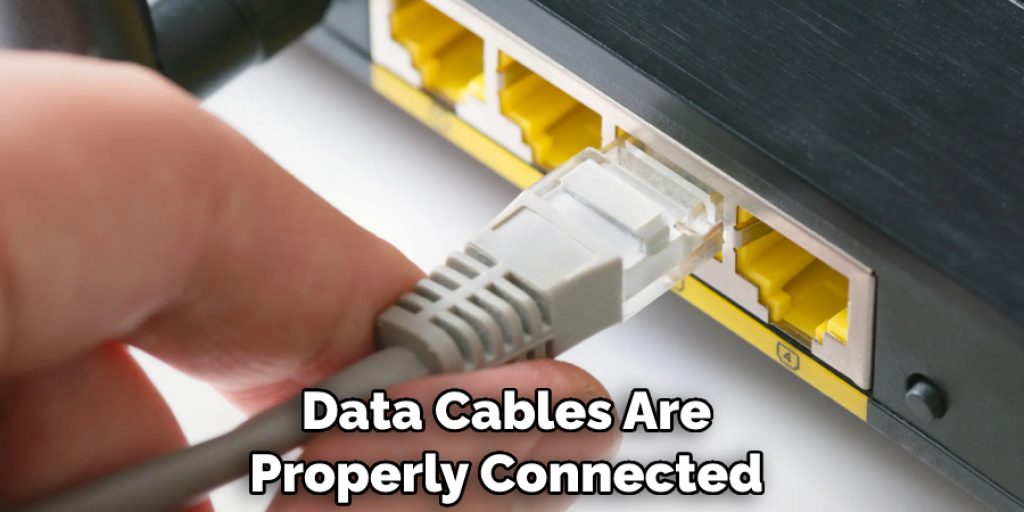
Once the connectors have been securely inserted, you should use a crimping tool to secure the connection further. This will help ensure that the cable is firmly in place and guarantee a strong connection between devices. You may also want to consider using electrical tape or zip ties to secure the cables along the wall, as this will help prevent any accidental disconnection of the cable.
Finally, you should test your connections to ensure that they provide a strong signal and that data is being transferred correctly between devices.
How Do You Test and Troubleshoot Any Problems With Running an Ethernet Cable Along Wall?
Once your Ethernet cable is run along the wall, testing and troubleshooting any potential problems is important. A few key steps to take include:
- Connect one end of the Ethernet cable to a laptop or desktop computer and the other end to a router or modem.
- Next, log onto the computer and open a web browser.
- Run an internet speed test to ensure the Ethernet connection runs correctly.
- Reset both the router and modem if necessary, then run the speed test again after resetting them.
- Check that all Ethernet cable connections are secure at both ends of the wall and any other device connected.
- Also, check the wall for any signs of damage that could interfere with the connection.
- If the issue persists, contact your internet service provider and explain the problem to them in detail.
The above steps should help you troubleshoot any problems related to running an Ethernet cable along a wall. If all else fails, you could consider hiring a professional to install the cable for you and ensure that everything is running correctly.

Are There Any Special Considerations When Running Ethernet Cable in Areas With High Temperatures or Humidity?
Yes, when running Ethernet cables in areas with higher temperatures or humidity, there are a few special considerations to take into account. First and foremost, make sure the cable you choose is rated for the temperature and humidity of the environment you plan on installing it.
Also, leave a buffer between the cable and any nearby heat sources, such as radiators or vents. Finally, avoid bending the cable sharply, as this can cause it to break down over time due to the increased temperature and humidity.
Following these steps will ensure that your Ethernet cable has a long lifespan in any environment. In conclusion, running Ethernet cables along walls is not difficult once you have all of the proper materials and tools.
When running Ethernet cable in areas with higher temperatures or humidity, however, use a cable rated for the environment and take steps such as keeping heat sources away from the cable and avoiding sharp bends to ensure its longevity.
Side Effects of Running Ethernet Cable Along Wall
- Fire Hazard: Running Ethernet cables along a wall can create a fire hazard, as the insulation on the cables can be damaged from rubbing against the wall, which could potentially cause sparks or an electrical short. It is important to ensure that any Ethernet cable running along a wall has been properly insulated and secured tightly to avoid a fire hazard.
- Aesthetics: Ethernet cables can be an eyesore, and running them along a wall will make this even more apparent. Suppose you are looking to maintain the aesthetic integrity of your home or office. In that case, it is important to ensure that the cables are run as securely and discreetly as possible so they do not distract from the overall look of the space.
- Damage to Cables: If Ethernet cables are not properly secured when running along a wall, they can be damaged from being moved or bumped into over time. This could decrease signal strength or even total loss of connectivity if the cable is damaged beyond repair.
- Signal Interference: Ethernet cables can be prone to signal interference if they are not run in a straight line or close enough together. If the cables are running along a wall, this could lead to a decrease in signal strength or even total loss of connection due to the materials between the cable and the wall.
- Inadequate Protection: As Ethernet cables are exposed to the elements when running along a wall, they can be at risk of being damaged by weather or other external factors. It is important to ensure that any cables run along a wall have been properly insulated and protected so they do not suffer from any unnecessary damage.
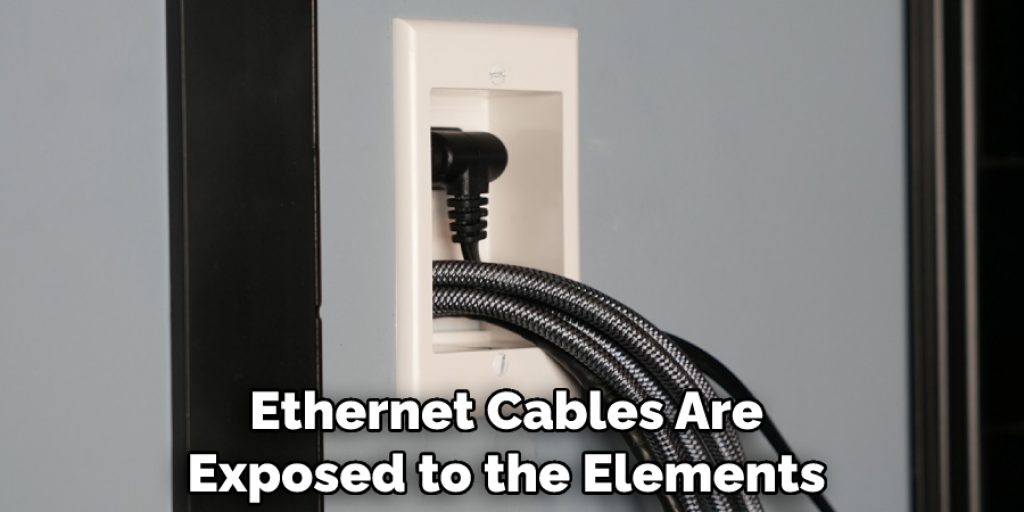
Following these tips can reduce the risk of having any of the above-mentioned side effects when running an Ethernet cable along a wall.
Conclusion
In conclusion, running an ethernet cable along a wall is an easy task that can be accomplished in a few simple steps. With the right tools and materials, anyone can install a network connection in their home or office without too much fuss.
The key to success is to plan where you want the cable to go, ensure the area is clear of any obstructions, and carefully measure the space before you begin drilling holes. I hope this article has been beneficial for learning how to run ethernet cable along wall. Make Sure the precautionary measures are followed chronologically.

